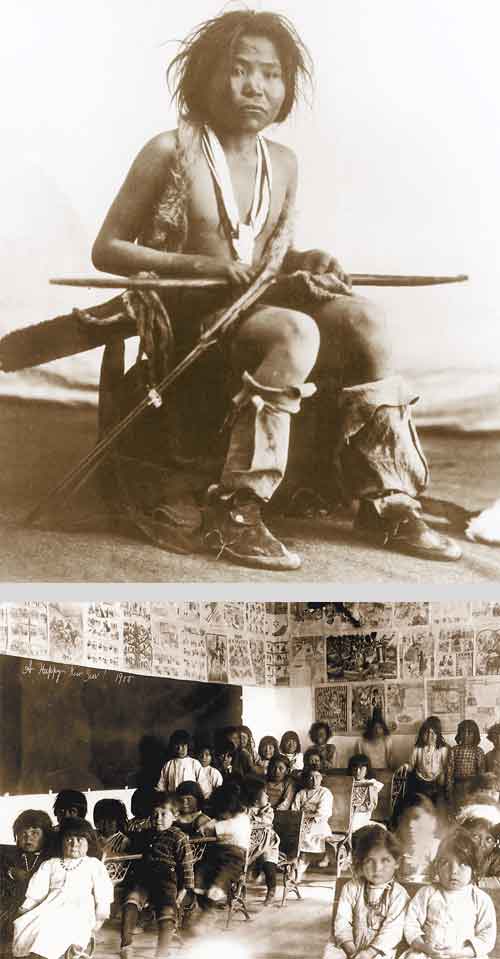Part one
TUBA CITY, Ariz. - While the Bosque Redondo Memorial is being prepared for dedication at Fort Sumner, N.M., former Navajo Chairman Peter MacDonald reflected on the legacy of the Navajos who endured the Long Walk and the lessons of the Navajo holocaust.
''I hope they do justice for our people, who were in prison for four long years,'' MacDonald said of the Bosque Redondo Memorial to be dedicated on June 4.
Jose Cisneros, director of New Mexico State Monuments, said the memorial would recognize that a great human tragedy occurred.
''Now we have a memorial that is a fitting tribute to the enduring suffering of the Navajo from 1863 to 1868, and to the Mescalero Apache, who shared their plight,'' Cisneros said in a statement.
''Hundreds of the Navajo people died when they were rounded up by the U.S. Army and forced to march from their Four Corners homeland, across most of New Mexico, to Fort Sumner.
''A third of the population at Bosque Redondo, some 9,000 at its height, succumbed to pneumonia, dysentery, exposure and starvation.''
The memorial was conceived in 1967 by planners of the 100th anniversary of the Treaty of June 1, 1868, that freed Navajo at Fort Sumner and resulted in the establishment of the current Navajo Nation.
Descendants of Long Walk survivors carry the memory of that long walk to the U.S. prison camp and the murders, rapes, starvation and cruelty by the U.S. Army.
MacDonald, among those descendants of the survivors of Long Walk and imprisonment at Bosque Redondo, urged American Indian youth to take a new long walk - one with pride, dignity and optimism - and honor their legacy of survival.
''The memorial should fit the heroism of those who saved our nation. Bosque Redondo, to us Navajos, is like Pearl Harbor and 9/11 to bilagaana [white people], Hiroshima to Japanese, or Auschwitz and the holocaust to the Jews.
''We must remain resolved to carry on the noble tradition of our ancestors,'' MacDonald told Indian Country Today.
''When I was growing up at Teecnospos, my grandparents, who went on that long walk, used to tell all of us children many horror stories about that place and told us to make ourselves strong, courageous, swift, and be creative in survival.''
MacDonald's grandparents told him, ''Learn to be self-sufficient through caring for the animals, hunting, knowing all plants and herbs which can be used for food and medicine. To eat squatting or ready to run should the enemy make a sneak attack.''
MacDonald said Navajos on the Long Walk endured and created an invincible spirit for their descendants.
''I always pictured Fort Sumner as a place of bad spirit - a place of suffering and death. I never gave up, nor will I ever give up. The hardships these brave ancestors endured were so that we can today enjoy the opportunity they envisioned for us, by being so courageous against all odds.''
Recently, MacDonald urged American Indians not to be seduced by U.S. government offers of water settlements and to never barter away their water rights.
Reflecting on Bosque Redondo, MacDonald said, ''Yes, we owe our ancestors a lot for not giving up and not surrendering our land, water and sovereignty. Yes, they did their best. They gave it their all, despite facing death, sickness, homesickness, and starvation every minute of the day.
''Yes, we owe our Fort Sumner ancestors our continued responsibility for land, water and sovereignty. They didn't whimper, they didn't cop out; they certainly didn't goof off.''
''The noted Yale historian Robin Winks said that such sites of conscience are 'places where human abuses occur which are later formally recognized by society in the hope that present and future generations learn never to repeat them,''' Cisneros said. ''If the Bosque Redondo Memorial and a future Long Walk Trail can move visitors to understand that, then all of humankind will benefit.''
